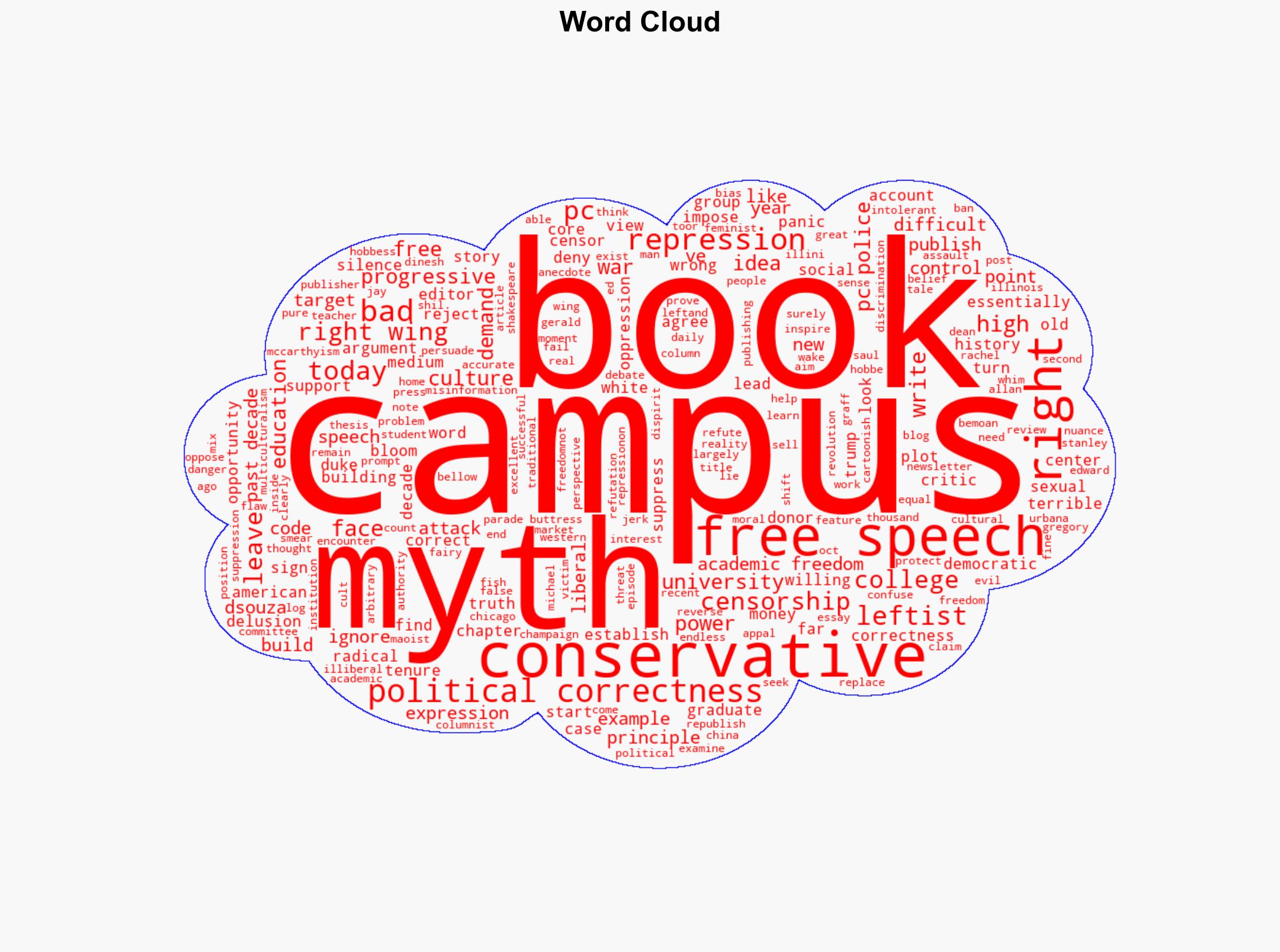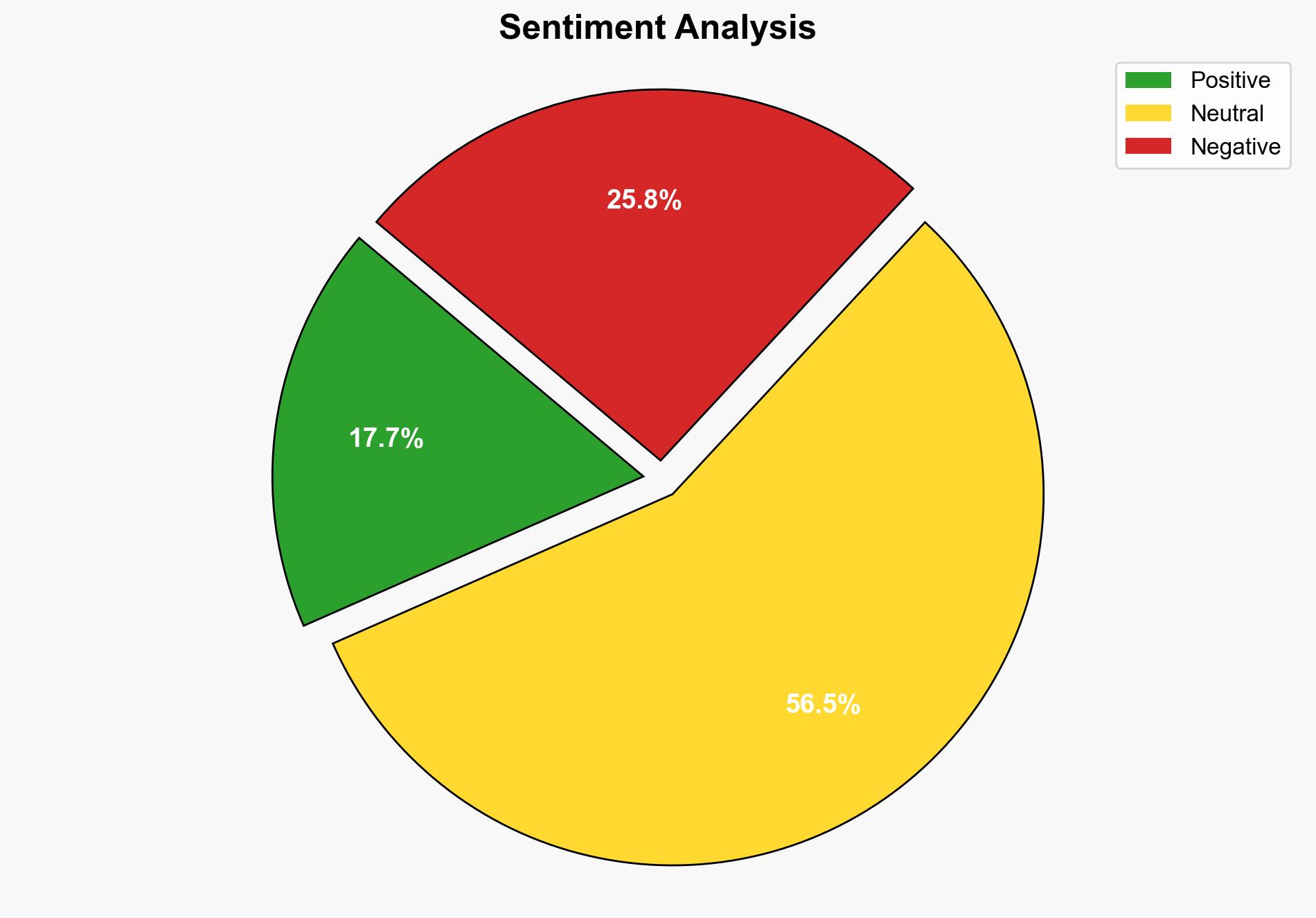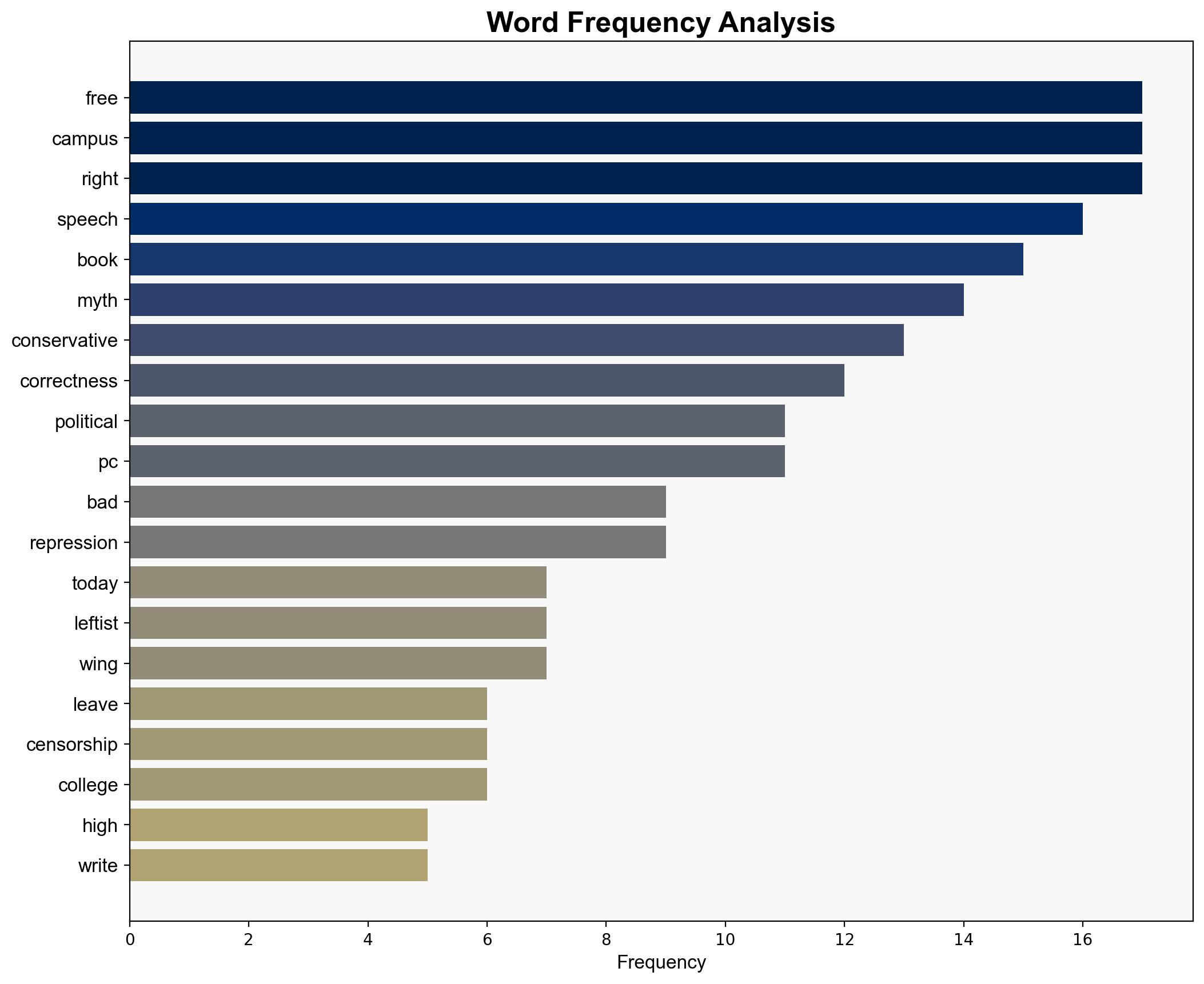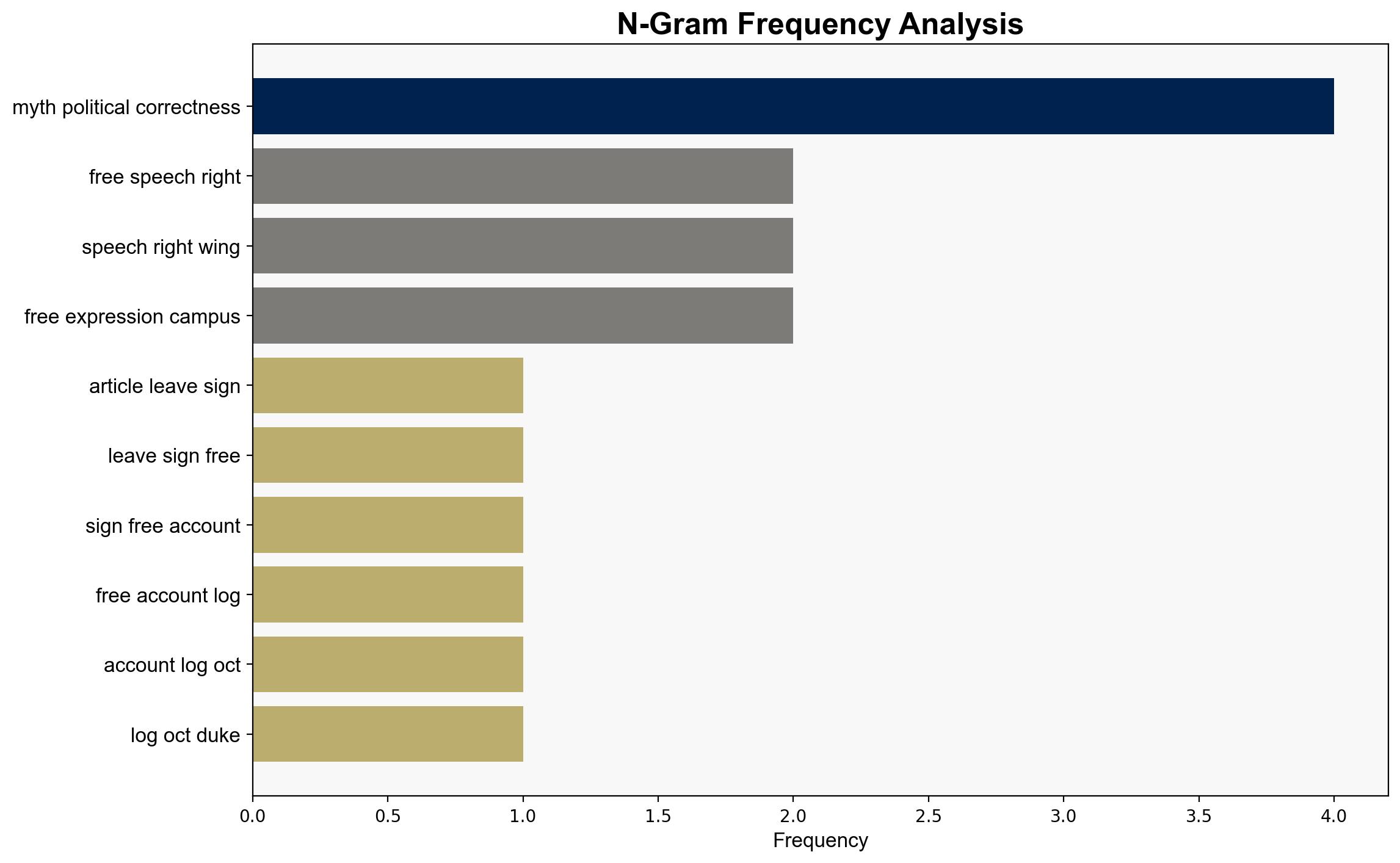The Myth of Political Correctness 30 Years Later – Inside Higher Ed
Published on: 2025-10-24
Intelligence Report: The Myth of Political Correctness 30 Years Later – Inside Higher Ed
1. BLUF (Bottom Line Up Front)
The analysis suggests that the narrative of political correctness as a dominant force in higher education is largely a myth perpetuated by conservative rhetoric. The most supported hypothesis is that the real threat to free expression on campuses comes from conservative efforts to suppress opposing views. Confidence level: Moderate. Recommended action: Encourage balanced discourse and critical evaluation of claims regarding political correctness in educational institutions.
2. Competing Hypotheses
1. **Hypothesis A**: Political correctness is a myth used by conservatives to attack higher education, with the real threat to free speech coming from right-wing efforts to suppress dissenting views.
2. **Hypothesis B**: Political correctness is a genuine issue on campuses, leading to the suppression of conservative viewpoints and a stifling of academic freedom.
Using the Analysis of Competing Hypotheses (ACH) 2.0, Hypothesis A is better supported by the evidence presented in the source text, which argues that the narrative of political correctness is exaggerated and misused by conservatives to stifle progressive discourse.
3. Key Assumptions and Red Flags
– **Assumptions**: Hypothesis A assumes that conservative narratives are primarily responsible for the perception of political correctness as a threat. Hypothesis B assumes that political correctness is a significant issue affecting academic freedom.
– **Red Flags**: The source text may exhibit bias by predominantly highlighting conservative actions while potentially downplaying instances where progressive actions may suppress free speech.
– **Blind Spots**: Lack of quantitative data or specific examples of suppression from both sides could skew the analysis.
4. Implications and Strategic Risks
– **Patterns**: The ongoing debate over political correctness could polarize academic environments, impacting educational quality and inclusivity.
– **Cascading Threats**: If left unchecked, the narrative could lead to increased censorship and self-censorship among faculty and students.
– **Potential Escalation**: The issue may escalate into broader societal debates, influencing public policy and educational funding.
5. Recommendations and Outlook
- Promote initiatives that encourage open dialogue and critical thinking in educational settings.
- Conduct further research to gather empirical data on the impact of political correctness on academic freedom.
- Scenario-based projections:
- Best Case: Balanced discourse leads to improved understanding and reduced polarization.
- Worst Case: Escalation of rhetoric results in increased censorship and division.
- Most Likely: Continued debate with periodic flare-ups but no significant policy changes.
6. Key Individuals and Entities
– Dinesh D’Souza
– Stanley Fish
– Gerald Graff
– Gregory Jays
– Rachel Toor
7. Thematic Tags
national security threats, cybersecurity, counter-terrorism, regional focus





